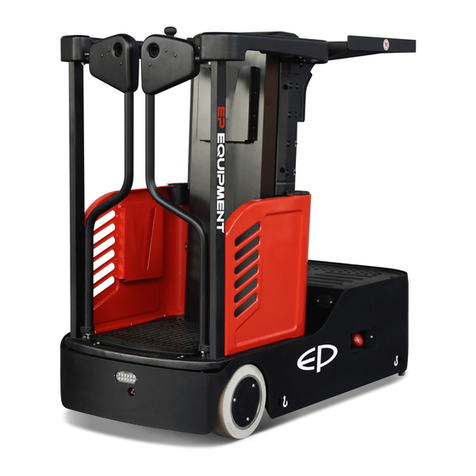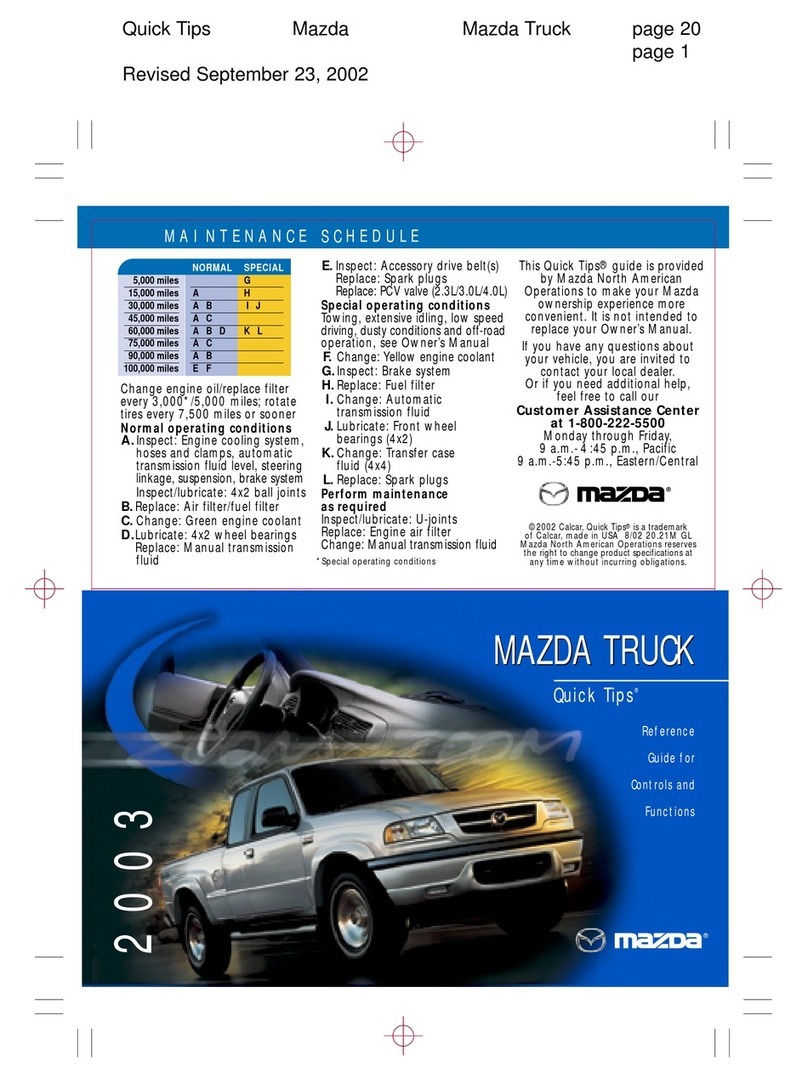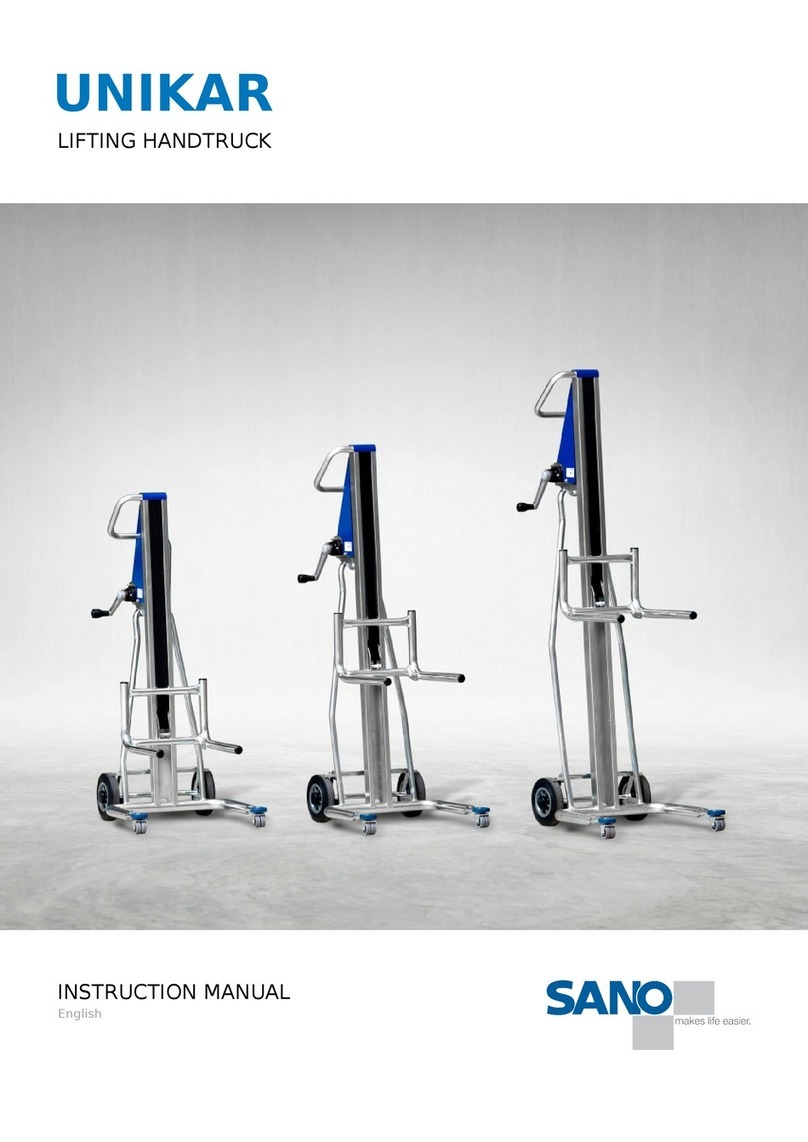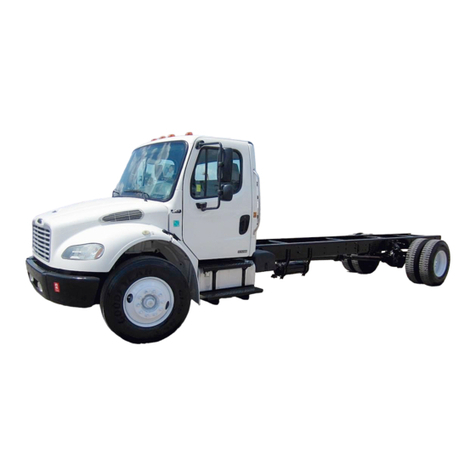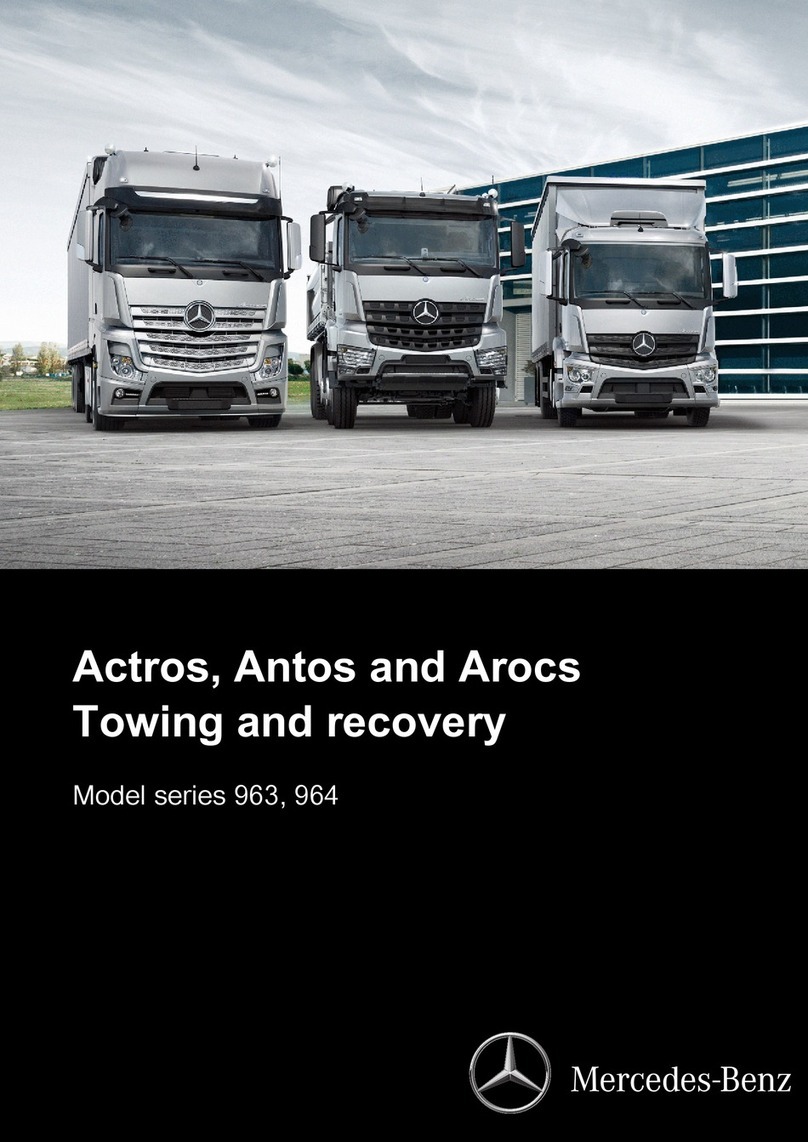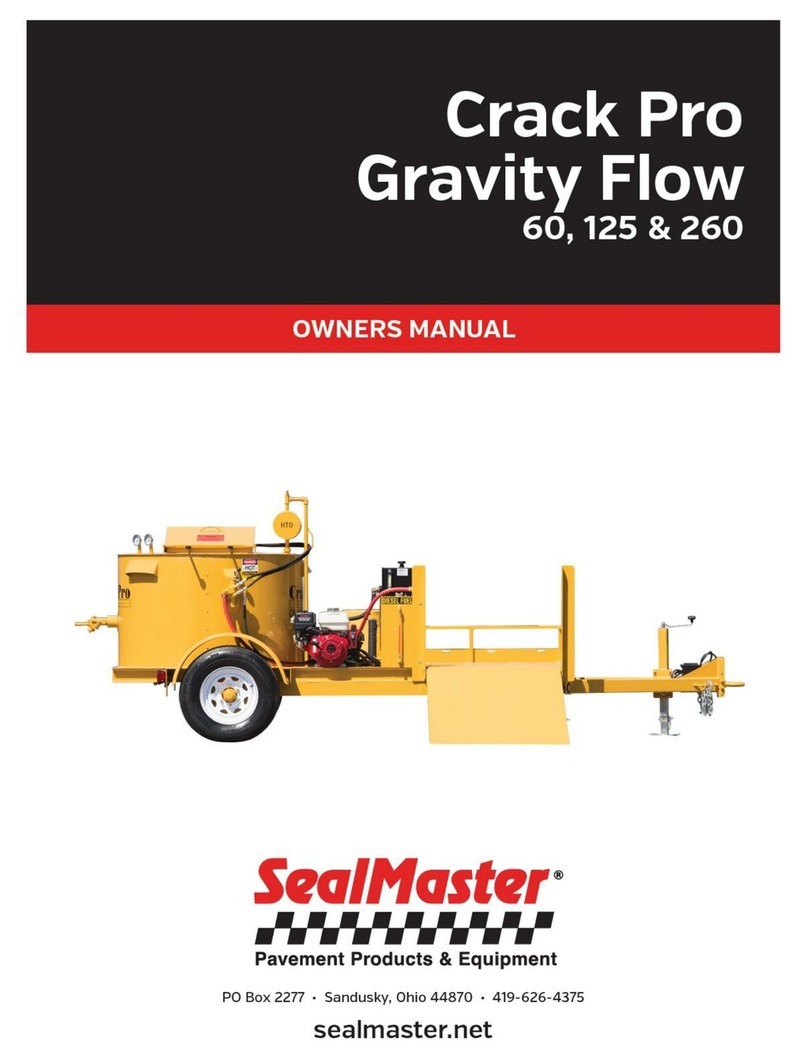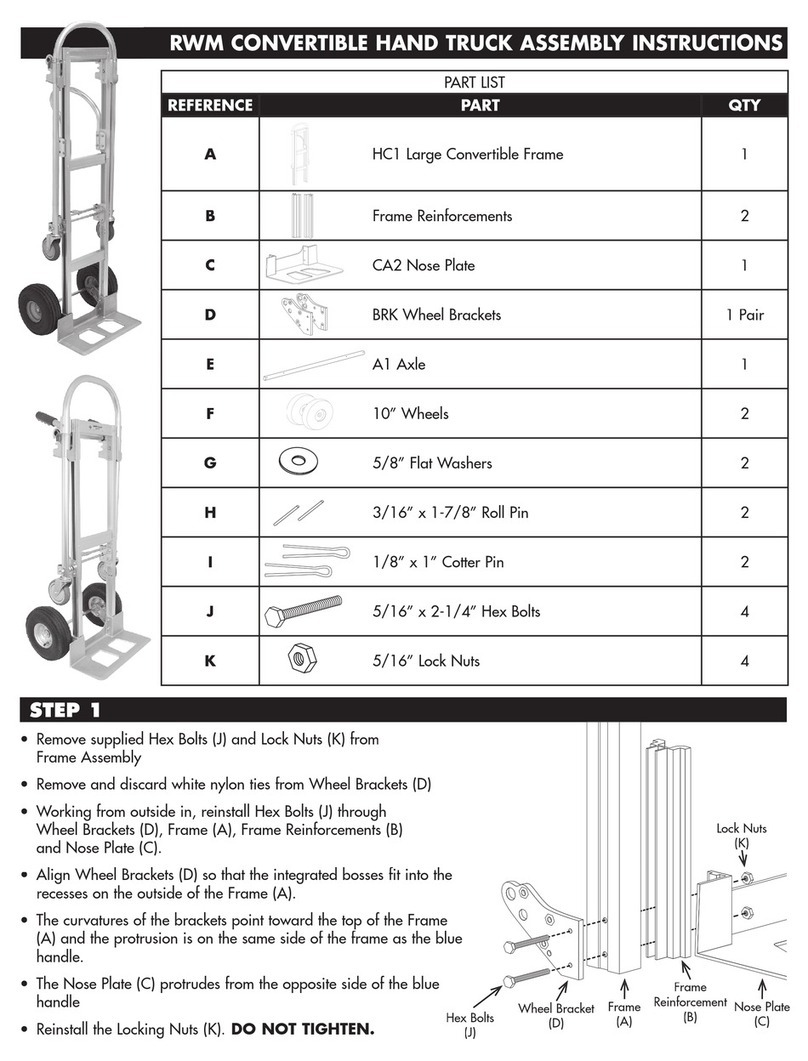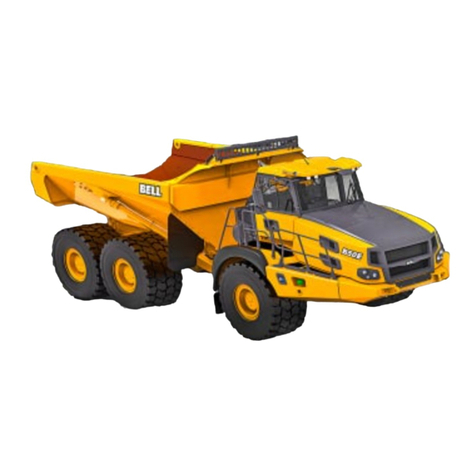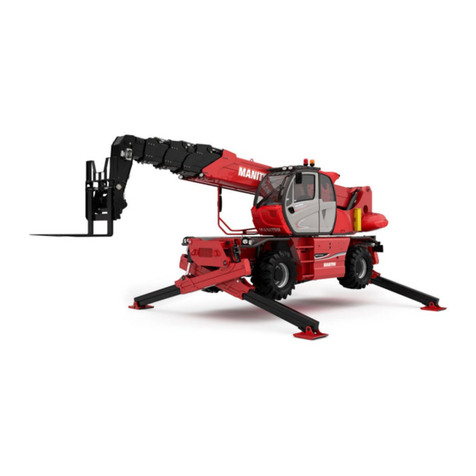Flextool TUFFTRUK B450E User manual

FOR MORE INFORMATION
CONTACT US ON 1300 353 986 OR VISIT flextool.com.au
RISK ASSESSMENT
Version 1.0 (March 2022)
FLEXTOOL TUFFTRUK™
B450E, B450G

Equipment Risk Assessment –Uncontrolled document once printed | Page 2 of 10
INFORMATION
Equipment description:
TuffTruk Mini Dumper
Make / manufacturer:
Flextool
Model number/s:
B450E, B450G
Assessment date:
1st March 2022
Link for manuals:
flextool.com.au
Additional information
Parchem Construction Supplies
1956 Dandenong Road
Clayton VIC 3168
Ph: 1300 353 986
WARNING
To reduce the risk of injury, all operators and maintenance personnel must read and understand this risk assessment before transporting, operating,
changing accessories or performing maintenance on this power equipment. The most important safety device for this or any equipment is the
operator. Care and good judgement are the best protection against injury. All possible hazards cannot be covered in this risk assessment, but we
have tried to highlight some of the important items. Risks associated with the use of equipment may vary based on jobsite and environmental
factors and operators should asses these prior to each use. Operators should look for and obey Caution, Warning and Danger labels placed on the
equipment. You should read this risk assessment and the corresponding equipment and engine (if applicable) operating instructions carefully and
consider the information in the context of how the product will be used. Even if you have previously used similar equipment carefully check out each
machine before you use it, get the "feel" for it and know its capabilities, limitations, potential hazards, how it operates, and how it stops. This risk
assessment summarises our best knowledge of the product, based on the information available at the time. Our responsibility for products sold is
subject to our standard terms and conditions of sale. Parchem does not accept any liability either directly or indirectly for any losses suffered in
connection with the use of the product whether or not in accordance with any advice, specification, recommendation or information given by it.
This equipment risk assessment has been undertaken in accordance with the Plant Regulations of 2007 & 2011 and Australian Standards AS 4024
for Safe Guarding of Machinery and ISO 31000:2009 Risk Management Standards.
© This publication is copyright. All rights are reserved. Flextool is a registered trade mark and TuffTruk is a trade mark of Parchem Construction
Supplies Pty Ltd.
EQUIPMENT
RISK ASSESSMENT

Equipment Risk Assessment –Uncontrolled document once printed | Page 3 of 10
HAZARDS ASSOCIATED WITH THIS EQUIPMENT
Hazards: Potential to cause harm to people, property or the environment. Tick the applicable hazards.
ENTANGLEMENT
EXPLOSION
Can anyone’s hair, clothing, gloves, necktie, jewellery, cleaning
brushes, rags or other materials become entangled with moving
parts of the plant, or materials in motion?
Y
Can anyone be injured by explosion of gases, vapours, liquids,
dust or other substances, triggered by the operation of the
plant or by the material handled by the plant?
Y
CRUSHING
SLIPPING, TRIPPING OR FALLING
Can anyone be crushed due to:
Can anyone using the plant or in the vicinity of the plant, slip,
trip or fall due to:
Material falling off plant?
Y
Uneven or slippery work surfaces?
Y
Uncontrolled or unexpected movement of the plant or its load?
Y
Poor housekeeping?
Lack of capacity for the plant to be slowed, stopped or
immobilised?
Obstacles being placed in the vicinity of the plant?
The plant tipping or rolling?
Y
Other factors not mentioned
Y
Parts of the plant collapsing?
Can anyone fall from a height due to:
Coming in contract with moving parts of the plant during testing,
inspection, operation, maintenance, cleaning or repair?
Y
Lack of work platform?
Y
Being thrown off or under the plant?
Y
Lack of proper stairs or ladders?
Being trapped between the plant and materials or fixed structures?
Y
Lack of guard rails or other suitable edge protection?
Y
Other factors not mentioned?
Y
Unprotected holes, penetrations or gaps?
Y
CUTTING, STABBING AND PUNCTURING
Poor floor or walking surfaces, such as, the lack of a slip
resistant surface?
Y
Can anyone be cut, stabbed or punctured due to:
Steep walking surfaces?
Y
Coming in contact with sharp or flying objects?
Collapse of the supporting structure?
Coming in contract with moving parts of the plant during testing,
inspection, operation, maintenance, cleaning or repair?
Y
Other factors not mentioned?
Y
The plant, parts of the plant or work pieces disintegrating?
ERGONOMICS
Work pieces being ejected?
Y
Can anyone be injured due to:
The mobility of the plant?
Y
Poorly designed seating?
Uncontrolled or unexpected movement of the plant?
Y
Repetitive body movement?
Y
Other factors not mentioned?
Y
Constrained body posture or the need for excessive effort?
SHEARING
Design deficiency causing mental or psychological stress?
Can anyone’s body parts be sheared between two parts of the
plant, or between a part of the plant and a work piece or structure?
Y
Inadequate or poorly placed lighting?
FRICTION AND ABRASION BURN
Lack of consideration given to human behaviour?
Y
Can anyone be burnt due to contact with the moving parts of
surfaces of the plant, or material handled by the plant?
Y
Mismatch of the plant with human traits and natural
limitations?
STRIKING
Other factors not mentioned?
Y
Can anyone be struck by moving objects due to:
SUFFOCATION
Uncontrolled or unexpected movement of the plant or material
being handled by the plant?
Y
Can anyone be suffocated due to lack of oxygen, or
atmospheric contamination?
Y
The plant or parts of the plant or work pieces disintegrating?
TEMPERATURE / THERMAL COMFORT OR FIRE
Work pieces being ejected?
Y
Can anyone come into contact with objects at high or low
temperature that are likely to cause burns, scalds or other
injuries (hot or cold)?
Mobility of the plant?
Y
Can anyone suffer ill-health due to exposure to high or low
temperature work environment?
Other factors not mentioned?
Y
Can anyone be injured by fire?
Y
HIGH PRESSURE FLUIDS
MATERIAL AND SUBSTANCES
Can anyone come into contact with fluids under high pressure, due
to plant failure or misuse of the plant?
Y
Can anyone be injured or suffer ill-health from exposure
(inhalation or direct contact) to:
ELECTRICAL
Chemicals or harmful fluids (incl. batteries)
Y
Can anyone be injured by electrical shock or burnt due to:
Toxic gases, vapours, fumes dust or mists
Y
The plant contacting live electrical connections?
Y
Biological or microbiological hazards
Y
The plant working in close proximity to electrical connections?
Y
OTHER HAZARDS
Overload of electrical circuits?
Y
Can anyone be injured or suffer ill-health from exposure to:
Damaged or poorly maintained electrical leads and cables?
Y
Noise –Hearing loss or other physiological disorders?
Y
Damaged electrical switches?
Y
Vibration –Hand held power equipment / whole body
vibration?
Y
Water near electrical equipment?
Y
Radiation –Radio frequency, infrared, UV, x-rays, lasers?
Lack of isolation procedures?
Other factors not mentioned?
Y
Other factors not mentioned?
Y

Equipment Risk Assessment –Uncontrolled document once printed | Page 4 of 10
RISK ASSESSMENT
HAZARDS DESCRIPTION
IMPACT DESCRIPTION
LIKELIHOOD
CONSEQUENCE
RISK
RATING
RISK CONTROL MEASURES TO ELIMINATE / REDUCE RISKS
STORAGE AND TRANSPORT
Lifting and manual handling
when manoeuvring equipment
from transport vehicle and
around the job site
Equipment could fall due to
unbalanced load resulting from the
use of the wrong or unsafe lifting
points or loading ramps
Muscular strain, back injury and
crushing
D
3.2
Medium
•Only use designated crane points for mechanical lifting.
•Always use certified and tested lifting slings, chains and loading ramps.
•Regular inspection by competent person of lifting and crane points and loading
ramps for damage or material fatigue.
•Never load or unload from transport vehicle with bucket loaded.
•Always follow correct manual handling techniques.
•Wearing of PPE (steel cap boots and gloves).
•Manual handling training.
Transporting the equipment
Equipment not suitably restrained
during transport
Damage to equipment or other
property due to loss of load from
vehicle
C
3.2
Medium +
•Ensure all equipment is restraint according to the NVHR load restraint
guidelines.
•Inspect straps and ropes for damage prior to use.
•Secure equipment using suitable tie down points on both equipment and vehicle.
OPERATION
Unexpected movement of
equipment with or without
operator
Bystanders and operator being
struck
E
3.1
Low
•‘Deadman’ switch is installed on the handle and is operational.
•Only trained operators are allowed to operate the equipment.
•Wearing of PPE steel capped boots is mandatory.
•Maintain a safe working distance of approx. 3m from bystanders.
•NEVER exceed the rated load capacity of the dumper.
•Develop a Safe Work Method Statement for the operation of the equipment.
Mechanical failure of equipment
Serious injury
C
2
Medium
•Complete service and maintenance as scheduled in the equipment and engine
owners’ manuals.
•Complete a prestart checklist prior to use.
•Report faults to management for repair. Do not use unsafe equipment.

Equipment Risk Assessment –Uncontrolled document once printed | Page 5 of 10
HAZARDS DESCRIPTION
IMPACT DESCRIPTION
LIKELIHOOD
CONSEQUENCE
RISK
RATING
RISK CONTROL MEASURES TO ELIMINATE / REDUCE RISKS
Exposure to fumes / engine
exhaust gases
(B450G Model only)
Suffocation due to lack of oxygen
E
4.1
Medium
•Use in well-ventilated open spaces.
•Petrol model not to be used in confined or restricted areas without detailed risk
assessments being carried out in line with Confined Spaces Procedures.
Vibration exposure (through
handle to operator)
Injury to hands fingers and wrists
C
2
Medium
•Operator to take regular breaks when required to operate equipment over a long
continuous period.
•Stop using equipment if any discomfort, tingling sensation or pain occurs and
seek medical advice before resuming use.
•Complete service and maintenance as scheduled in the equipment and engine
owners’ manuals.
Noise exposure
(B450G Model only)
Loss of hearing
C
2
Medium
•Wear PPE hearing protection.
•Complete service and maintenance as scheduled in the equipment and engine
owners’ manuals.
•Replace damaged or missing warning decals requiring the use of hearing
protection.
Dust and flying particles
Eye injury and respiratory problems
C
2
Medium
•Ensure appropriate PPE is ALWAYS worn - P2 dust mask and safety glasses
must be worn.
•Always discharge contents of the bucket or activate bucket disengage lever from
the steering / operating position –Never stand in front of or alongside dumper
when activating lever.
Hot equipment and engine parts
(engine exhaust etc.)
Risks of burns to body
C
2
Medium
•Replace damaged or missing warning decals highlighting hot surfaces.
•Do not touch engines, engine exhausts or other parts such as gear boxes that
generate heat during or immediately after operation.
•Wait for engine and equipment to completely cool down prior to commencing
repairs or maintenance.
Exposure to rotating wheels
Injury to feet
C
3.2
Medium +
•Wear PPE (steel cap boots).
•Never operate equipment with damaged, broken or missing guards.

Equipment Risk Assessment –Uncontrolled document once printed | Page 6 of 10
HAZARDS DESCRIPTION
IMPACT DESCRIPTION
LIKELIHOOD
CONSEQUENCE
RISK
RATING
RISK CONTROL MEASURES TO ELIMINATE / REDUCE RISKS
Operator slipping or tripping
during equipment operation.
Loss of control of equipment,
personal injury, damage to
equipment
C
3.2
Medium +
•Always operate the equipment with two hands on the handlebar for maximum
control.
•Assess work area prior to operating equipment, do not operate up or down a
slope greater than 25 degrees.
•NEVER allow people to ride inside bucket / tub.
•Maintain a safe operating distance from trenches, excavations and pits.
•Always look over your shoulder and check behind you for hazards prior to
operating in reverse.
MAINTENANCE AND REFUELLING
Refuelling engine
(B450G Model only)
Fire or explosion
Chemical burns (fuels and oils)
C
3.2
Medium +
•Smoking or use of mobile phone is not permitted while refuelling.
•When refuelling ensure nozzle is in contact with the machinery (grounded).
•Switch off engine before refuelling.
•Keep fuel away from sources of ignition.
•Always use fuel container nozzle to reduce risk of spilling fuel.
•Clean up any fuel spills immediately.
•Always carry first aid facilities.
•Refuel on an impermeable surface away from drains / water courses in a well-
ventilated area.
•Re-cap fuel container after use and store in appropriate area.
•Always wear PPE when refuelling engine (gloves and glasses) to reduce risk of
fuel meeting hands and eyes.
•Replace damaged or missing warning decals.
Recharging Battery
(B450E Model only)
Electrocution
E
4.2
Medium +
•Only charge the unit using the factory fitted charging unit.
•Inspect ALL cables for exposed wires for cuts and damage prior to charging –If
damaged cables are identified isolate equipment and have repaired immediately
by a licenced electrician.

Equipment Risk Assessment –Uncontrolled document once printed | Page 7 of 10
HAZARDS DESCRIPTION
IMPACT DESCRIPTION
LIKELIHOOD
CONSEQUENCE
RISK
RATING
RISK CONTROL MEASURES TO ELIMINATE / REDUCE RISKS
Maintenance and repair
Cuts and burns (heat)
Entanglement of clothes, hair etc.
Chemical burns (fuels and oils)
C
3.2
Medium +
•Only trained and competent personnel to undertake maintenance and repair on
equipment.
•Complete service and maintenance as scheduled in the equipment and engine
owners’ manuals.
•Use only genuine parts and accessories to ensure correct compatibility and safe
use of equipment.
•Remove spark plug (B450G) from engine or disconnect battery (B450E) prior to
conducting maintenance to eliminate unexpected starting of equipment.
•Always ensure guards, safety switch and any other safety mechanisms are free
from damage and installed prior to testing and returning product to service.
•Always wear PPE when servicing and repairing equipment (gloves, glasses and
steel cap boot) to reduce risk of cuts, burns and skin exposure to fuels and oils.
•Never work underneath equipment suspended by lifting device or on ramps.

Equipment Risk Assessment –Uncontrolled document once printed | Page 8 of 10
RISK RATING MATRIX
LIKELIHOOD OF HAZARD OCCURRING
CONSEQUENCE IF HAZARD OCCURRED
CATEGORY
EXPLANATION
CATEGORY
EXPLANATION SAFETY & HEALTH
EXPLANATION
ENVIRONMENT
A. Almost Certain
It is expected to occur in most circumstances
Cat 1. Notable Event
Minor injury –first aid injury
Very minor pollution
B. Very Likely
Has occurred in some circumstances (known to have occurred)
Cat 2. Significant Event
Single MTI
Minor local pollution
C. Likely (Possible)
Might have occurred at some time but details not known
Cat 3.1. Highly Significant
Single LWC or multiple MTI
Evident pollution local concern
D. Unlikely
Could occur but has not at yet happened
Cat 3.2. Serious Event
Permanent disability or multiple LWC
Significant local pollution
E. Very Unlikely
Has occurred somewhere (heard of it happening)
Cat 4.1. Extremely Serious
Single fatality
Major local pollution
F. Extremely Unlikely
Could theoretically occur but not aware of any instances
Cat 4.2. Catastrophic
Multiple fatalities
Extremely severe pollution
CONSEQUENCE
RISK LEVEL CLASSIFICATION
Cat 1
Cat 2
Cat 3.1
Cat 3.2
Cat 4.1
Cat 4.2
High
Unacceptable
Job must stop and not proceed without resolving this risk issue, for
example by adding more risk controls or substituting existing controls with
more effective ones.
LIKELIHOOD
A
Medium +
Medium +
High
High
High
High
B
Medium
Medium +
Medium +
High
High
High
Medium +
Tolerable
Job may proceed if further risk reduction is not practicable. Take action to
reduce risk where possible.
C
Medium
Medium
Medium +
Medium +
High
High
Medium
Acceptable
Job may proceed if further risk reduction is not practicable.
Review risk on subsequent jobs to determine whether further action is
appropriate.
D
Low
Low
Medium
Medium
Medium +
High
E
Low
Low
Low
Low
Medium
Medium +
Low
Negligible
Job may proceed. Further risk reduction should always be considered but
may not be practicable.
F
Low
Low
Low
Low
Low
Medium

Equipment Risk Assessment –Uncontrolled document once printed | Page 9 of 10
END OF ASSESSMENT

Parchem Construction Supplies Pty Ltd
1956 Dandenong Road, Clayton VIC 3168, Australia
Phone: 1300 353 986
flextool.com.au
ABN 80 069 961 968
© This publication is copyright. All rights are reserved. Flextool is a registered trade mark of Parchem Construction Supplies Pty Ltd.
FOR MORE INFORMATION
CONTACT US ON 1300 353 986 OR VISIT flextool.com.au
This manual suits for next models
1
Table of contents
Popular Truck manuals by other brands

Komatsu
Komatsu HM300-3 Field assembly instructions

Gude
Gude GHW 2500-180 PU Translation of the original instructions
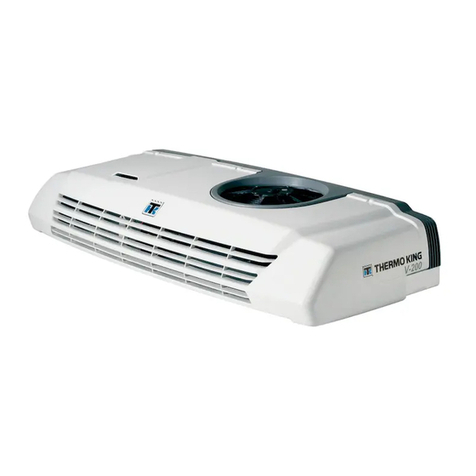
Trane
Trane Thermo King V-220 Series installation manual
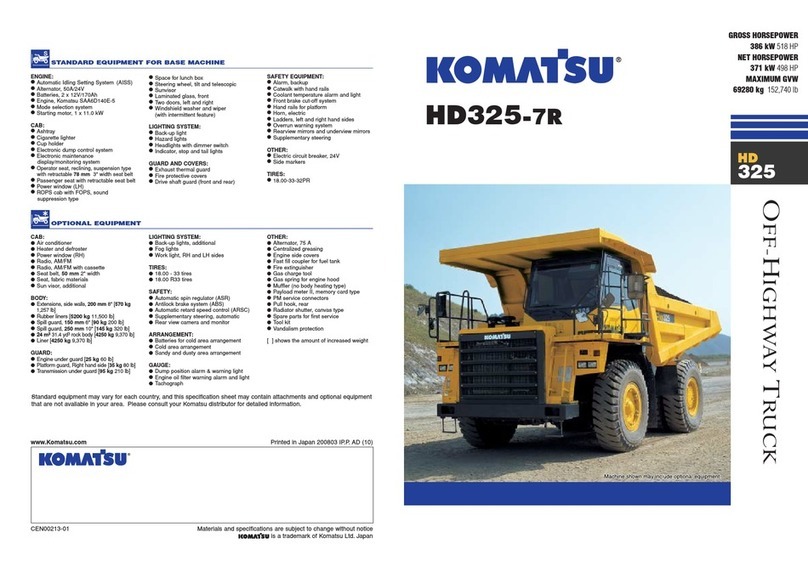
Komatsu
Komatsu HD325-7R brochure

Komatsu
Komatsu Galeo HD405-7 brochure
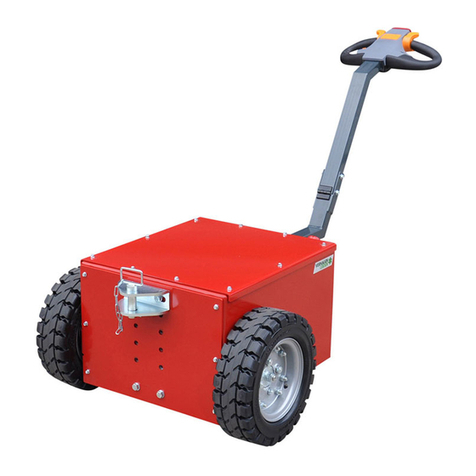
Verhagen Leiden
Verhagen Leiden V-MOVE XL+ User manual and parts list
